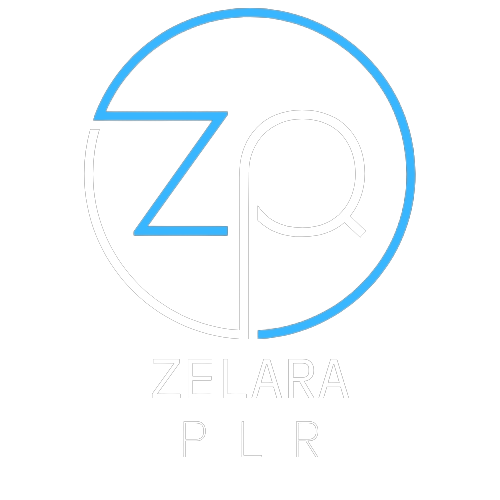So, you've decided to start your own Shopify store. Congratulations! Now comes the exciting part - building your product inventory. But wait, before you dive headfirst into sourcing products, have you considered the advantages and disadvantages of using PLR (Private Label Rights) in your store?
What is PLR?
PLR, or Private Label Rights, is a type of license that allows you to legally modify and sell a product under your own brand. These products can vary from ebooks and software to videos and graphics. PLR gives you the freedom to customize and market the product as your own, without having to create it from scratch.
The Advantages of Using PLR
1. Time and Effort Savings
Let's face it, starting a business is hard work and time-consuming. Developing a product from scratch requires extensive research, planning, and testing. With PLR, you can skip the lengthy creation process and focus instead on marketing and growing your business. It's a time and effort-saving option for entrepreneurs who want to hit the ground running.
2. Lower Costs
Creating your own products can be expensive, especially if you factor in research, design, and manufacturing costs. PLR offers a cost-effective alternative, allowing you to purchase ready-made products at a fraction of the price. By leveraging PLR, you can invest your budget in other important aspects of your business, such as marketing and customer support.
3. Flexibility and Customization
PLR products provide a solid foundation that you can tailor to suit your brand and target audience. You have the freedom to modify the product, add your own branding elements, and customize it to align with your store's unique style. This flexibility allows you to create a cohesive and consistent shopping experience for your customers, increasing brand loyalty and recognition.
4. Quick Market Entry
Launching a new product can take months or even years of development, testing, and marketing. With PLR, you can expedite your market entry by offering pre-existing products to your customers. This means you can start generating sales and building your customer base right away, without the lengthy lead time associated with developing products from scratch.
5. Diverse Product Range
One of the great things about PLR is the wide range of products available. Whether you're looking to sell ebooks, courses, templates, or graphics, you can find PLR products in almost any niche. This diversity allows you to cater to various customer interests and preferences, expanding your product range without the hassle of sourcing or creating multiple products.
The Disadvantages of Using PLR
1. Lack of Originality
One of the main downsides of using PLR products is the lack of originality. Since PLR products are available to multiple users, there's a chance that other Shopify stores may be selling the same or similar products as you. To combat this, it's essential to customize the PLR product as much as possible, adding your unique touch and branding elements to stand out from the competition.
2. Quality Concerns
Not all PLR products are created equal. While there are many high-quality PLR products available, some may fall short in terms of content, design, or functionality. It's crucial to thoroughly evaluate the PLR products you intend to use, ensuring they meet your quality standards and align with your brand's reputation. Remember, low-quality products can harm your store's credibility and customer trust.
3. Limited Control
When you use PLR products, you're bound by the terms and conditions set by the original creator. This means you may have limited control over certain aspects of the product, such as pricing, distribution channels, or future updates. It's essential to carefully review the PLR license and understand any restrictions or limitations before incorporating the product into your store.
4. Branding Challenges
While PLR products offer customization options, it can still be challenging to create a seamless brand experience. Integrating PLR products into your store requires careful consideration of design elements, messaging, and overall brand consistency. If not done properly, it can create a disjointed shopping experience for your customers, impacting your brand's image and customer loyalty.
5. Market Saturation
Due to the widespread availability of PLR products, certain niches may become oversaturated with similar offerings. This can make it harder for your store to stand out and attract customers. To overcome market saturation, it's crucial to differentiate your store by providing exceptional customer service, targeted marketing strategies, and unique value propositions.
Is PLR Right for Your Shopify Store?
Like any business decision, using PLR in your Shopify store comes with its own set of advantages and disadvantages. Consider your specific business goals, budget, and target audience before deciding whether to incorporate PLR products into your inventory. Remember, customization and branding are key to leveraging PLR effectively and standing out from the competition.
So, whether you choose to embrace the time-saving and cost-effective aspects of PLR or opt for a more original approach, the key to success lies in your ability to deliver value, create a unique brand experience, and provide exceptional customer service. Now go forth, make informed decisions, and build an amazing Shopify store that sets you apart from the rest!
Ready to Take Your Shopify Store to the Next Level?
Using PLR in your Shopify store can be a game-changer, but it's just one piece of the puzzle. If you're ready to supercharge your online business and learn more tips and tricks to boost your success, be sure to explore our website for valuable resources, guides, and expert advice. Happy selling!




Leave a comment
This site is protected by hCaptcha and the hCaptcha Privacy Policy and Terms of Service apply.